








Produced by the Institute for Health Metrics and Evaluation and Smile Train
Principal Investigators: Nicholas J. Kassebaum, MD, IHME
Barbara Delage, PhD, RNutr, Smile Train
This report, the world’s first study to examine the global burden of malnutrition among children with clefts, details the global impacts of malnutrition in children under 5 born with clefts by merging data collected on Smile Train patients from 2000 to 2020 with estimates and insights on the direct health consequences of malnutrition from the Global Burden of Diseases, Injuries, and Risk Factors Study led by the Institute for Health Metrics and Evaluation at the University of Washington.

No one is ever prepared to encounter malnutrition.
A few years ago, I visited the orthodontics center at our partner Bhagwan Mahaveer Jain Hospital (BMJ) in Bangalore, India, where, with palpable excitement, the surgeon and orthodontist showed me a device they could customize to fit in any child’s cleft, called a Nasal Alveolar Molding (NAM). Once fitted, they explained, patients can eat and nurse with ease, and their surgeries will be even more successful. I was thrilled to see it. But it wasn’t until we stepped out into the hallway a bit later that its true impact came shockingly alive.
Across the hall from us stood a young couple holding a tiny, 10-day-old newborn, who was skin and bones and barely holding onto life. His cleft was so severe that he couldn’t nurse or even use a bottle without choking. I will never forget the fear and desperation on his parents’ faces.
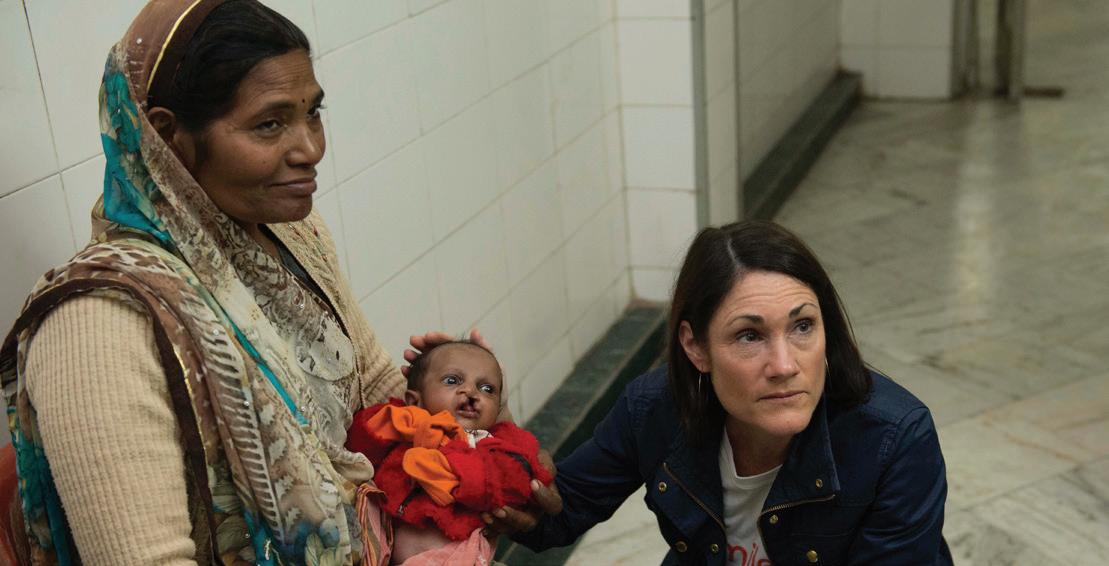
It was one of the greatest honors of my life to be there when our partners looked this family in the eyes and told them they didn’t need to worry anymore. Furkhan was in the right place. He would receive a NAM so that he could nurse and gain weight. And at the exact time he was ready, they would perform the cleft surgery that would give him a second chance at life. All for free.
Moving as that experience was, the truth is that Smile Train partners like those at BMJ make that kind of impact every day. In fact, since our founding in 1999, our focus on local empowerment has made life-changing surgery and other vital cleft treatments possible for more than 1.5 million children and has transformed cleft care in more than 90 countries.
Nutritional care is an indispensable - and often lifesaving - component of cleft care. I hear frequently from our partners about other babies just like Furkhan who come to them too underweight for the surgeries they need. The free nutritional support Smile Train
sponsors literally saves these babies’ lives and makes surgery possible.
Given this, training cleft nutrition and feeding experts in addition to surgeons has become a key pillar of our work. Our nutritional programs have come a long way over the past several years, and at the 76th UN General Assembly in 2021, we announced our five-year commitments to reach more than one million children and mothers impacted by clefts with essential nutritional counseling and care.
In pursuing this ambitious plan, however, we first needed to understand the full scope and nature of the challenge. While we knew there were many cleft-affected children and families in need, the data on exactly how many were at risk of malnutrition and where the need was greatest just didn’t exist on a global scale.
So, we embarked on a first-of-its kind study to analyze information and outcomes over a 20-year period to understand the global landscape of nutrition as relates to cleft care. As you will see, our findings provide a groundbreaking depth and breadth of data, invaluable insights, and an unprecedented roadmap for cleft care around the world.
With this report as our starting point, we are committed to building upon the countless relationships we have built with healthcare workers, families, governments, NGOs, donors, academia, the global Cleft Proud community, and so many others over the past two decades to innovate solutions that will bring lifesaving nutritional support and comprehensive cleft care to more children and communities than ever before.
Children like Furkhan deserve no less.
Susannah Schaefer President & CEO, Smile TrainOrofacial clefts (or simply “clefts”) are one of the world’s most common birth differences. Every three minutes, in fact, a baby is born with a cleft, or about 195,000 babies each year.
A cleft occurs when certain body parts and structures do not fuse together during fetal development. Clefts can involve the lip and/or the palate (the roof of the mouth).1
Clefts are often mistakenly considered cosmetic. In reality, babies born with clefts face a range of serious and often life-threatening issues, including challenges eating, speaking, breathing, and hearing.2
One of the most underrecognized dangers to babies with clefts, however, is often overlooked - the pernicious, life-threatening impact of malnutrition.
Clefts can make eating and feeding, and especially breastfeeding, challenging. The presence of a cleft reduces an infant’s ability to create suction, making it difficult or impossible for them to get milk, and even swallow, leading to excessive air intake, choking, and gagging, as well as an increased risk of infection from the presence of milk in their lungs and airways. Exhausted by their struggle to feed or feeling deceptively full due to the large amount of air in their stomachs, babies with clefts often stop nursing before they have adequate calories and nutrients.3 Without adequate nutrition in these critical months and years of development, babies and children with
clefts often become underweight and at risk of growth failure and death.4
Malnourished babies and children are also at increased risk of complications from anesthesia and surgery and are known to heal less quickly. It’s critical that babies meet a minimum safe standard of weight and height before they have cleft surgery.5 Delayed surgery can accelerate feeding challenges and the risk of malnutrition, lead to delayed speech development, and permanently impact a baby’s overall health and development. When malnutrition persists for a long time or is not reversed, health problems may continue into adulthood. Survivors of childhood malnutrition have been found to have shorter adult stature and earlier onset of health issues like obesity, diabetes, kidney disease, and obstructed labor, as well as cognitive problems that lead to poor performance in school and lower lifetime earnings. However, there are solutions. With counseling on feeding techniques, specialized equipment, and ongoing support, medical professionals and caretakers can ensure that babies with clefts can get the lifesaving nourishment they need. If a baby reaches a healthy weight and receives surgery safely, the threat of cleft-related malnutrition is removed. The challenge is getting this information and these resources to the people who need them the most. That’s why it is critical to understand the relationship between clefts and malnutrition.6
At one month old, Mirian weighed just four pounds. Five months later, with the support of our local partners, she had transformed into a happy, chubby baby.
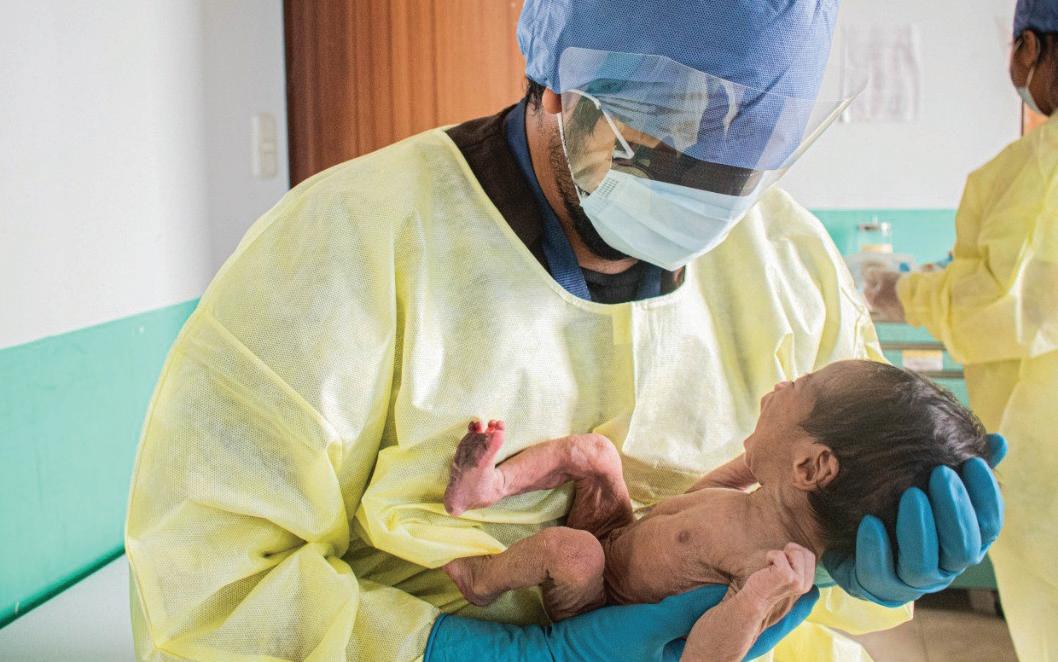
In May of 2020, a rescue team from Smile Train partner Esperanza de Vida Rescue and Nutritional Center arrived in the village of Limón Timote Camotan, Guatemala. These community health professionals and social workers had traveled 50 miles to find children and adults with clefts in need of care.

There, in a small adobe house with a roof of palm fronds, the team found Mirian.
At one month old, little Mirian weighed just four pounds. Like so many infants with clefts, her cleft lip and palate made it difficult for her to breastfeed despite her mother’s best efforts. She was already acutely malnourished and showed signs of severely delayed growth.
“When I met Mirian, I was really alarmed. The little girl was in a severe state of malnutrition,” said Alfredo, a social worker on the rescue team.
Mirian’s mother, Modesta, was desperate to help her daughter, but the family’s situation was precarious. Modesta was raising her three children alone, and, in her community, single mothers didn’t work outside the home. The family relied on the income of Modesta’s father, who worked as a farm laborer. Even traveling far enough to find such specialized care was out of their reach – or so the family thought.
“I began explaining to Modesta what we do in Esperanza de Vida and what we could do for Mirian in terms of urgent medical and nutritional
care,” said Alfredo. “Mirian would receive expert nutritional support until she was healthy enough for surgery on her cleft – and that the nutrition support and surgery would be free, thanks to support from Smile Train. Modesta didn’t hesitate to accept our help.”
Knowing this was Mirian’s only chance at survival, Modesta traveled back with the rescue team to Esperanza de Vida’s Rescue and Nutritional Recovery Center, holding her tiny daughter close the whole way. “At the moment of the rescue, I was really nervous but happy at the same time. I knew my daughter needed medical treatment, and this was the opportunity we were praying for,” said Modesta, reflecting on that life-changing night.
Once they arrived at the rescue center, the medical team wasted no time in assessing Mirian to begin her specialized treatment plan. The little girl’s cries made it clear that she was not giving up without a fight – and her team at Esperanza de Vida would fight with her every step of the way.
“This little girl was so vulnerable to malnutrition due to her cleft and the poverty into which she was born. Her situation was not very encouraging because of her condition, but Mirian is a warrior. No obstacle prevented her from getting a satisfactory recovery, sooner than we expected,” said Jennifer Jiménez, the nutritionist who cared for Mirian during her recovery. The expertise of the nutrition team, Modesta’s dedication to learning how to feed her daughter, and Mirian’s own incredible will to live led to a rapid recovery.
Five months later, in October, Mirian was ready to go home. The once-tiny infant had transformed into a happy, chubby baby whose laughter was often heard around the hallways of Esperanza de Vida.

Modesta is profoundly thankful to have found Esperanza de Vida, because now she has hope for Mirian. “I feel blessed by how we were treated at Esperanza de Vida, both my daughter and me. I thank you in advance for everything that is coming in Mirian’s treatment. I want to give my daughter the best and hope that both of us can thrive together in the future,” she said.
Mirian’s cleft journey has since continued with surgery and ongoing care. Esperanza de Vida stays in contact with Modesta to check in on Mirian’s progress and provide at-home nutrition support. In November, when Hurricane Eta devastated crops in the region and Mirian’s grandfather lost his job as a farm laborer, Smile Train provided the family with a Smile Grant to ensure that Mirian would stay healthy while she grew strong enough for her cleft surgery.
It worked. Mirian has since had two successful, lifesaving cleft surgeries, and is now receiving specialized speech therapy thanks to Smile Train. And the rescue team at Esperanza de Vida has continued their search for more individuals with clefts in need of care – because, sadly, Mirian’s experience with malnutrition is not unique.
“Nutritional care for children with clefts is not a complementary service. It’s critical for the wellbeing of the patients we support, on so many levels. Mirian is the perfect example of how great the impact of Smile Train support in this area is. We are fortunate to make this possible with our donors and our partners,” said Andrea Anaya, Smile Train’s Senior Program Manager for Mexico, Central America, and the Caribbean.
“I’m happy to see the transformation of all the children I get the chance to help,” said Alfredo, who watched Mirian’s progress with joy. “We are blessed to be able to rescue them and change their lives and their families’ lives through our work.”
“This little girl was so vulnerable to malnutrition due to her cleft and the poverty into which she was born. Her situation was not very encouraging because of her condition, but Mirian is a warrior. No obstacle prevented her from getting a satisfactory recovery, sooner than we expected.”
“Nutritional care for children with clefts is not a complementary service. It’s critical for the well-being of the patients we support, on so many levels. Mirian is the perfect example of how great the impact of Smile Train support in this area is. We are fortunate to make this possible with our donors and our partners.”
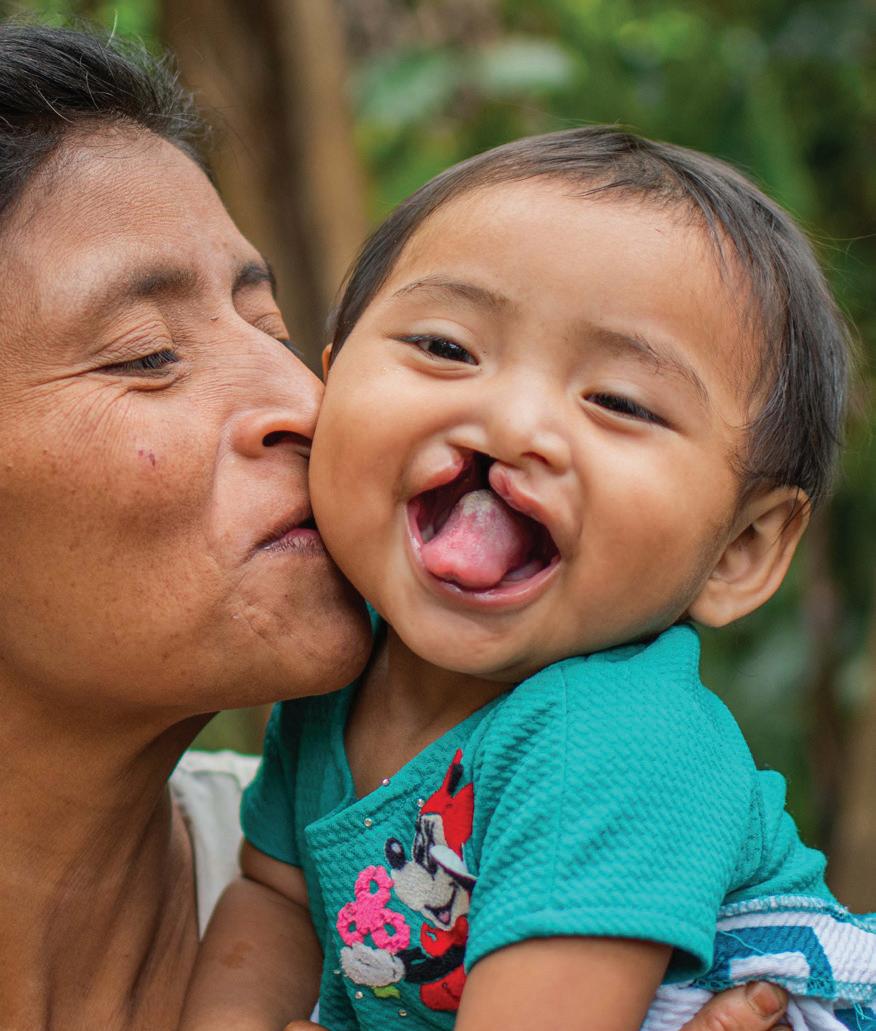
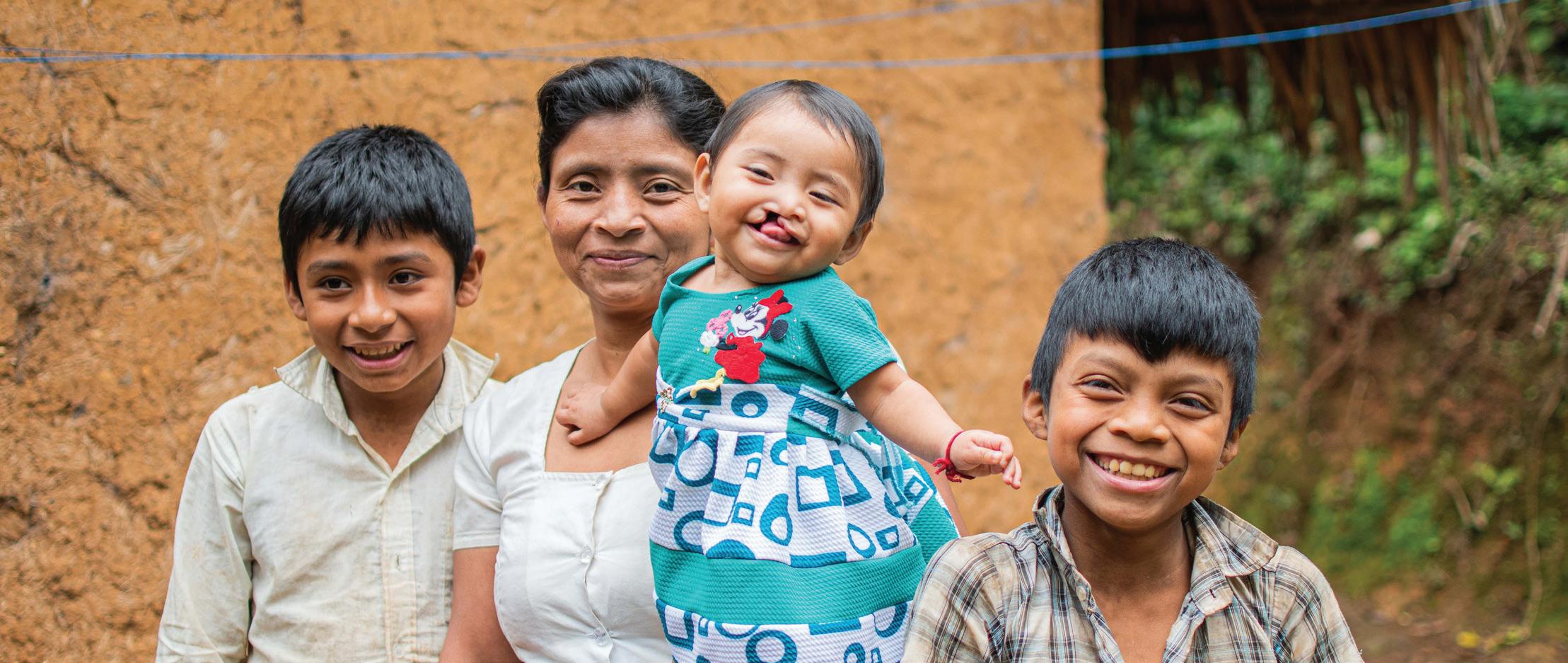
This report is more than a warningit is also a roadmap. While previous studies have shown that children with clefts are predisposed to malnutrition, this study offers the first estimates of the scale and scope of the challenge and profound new insights - as well as profound new hope.
Our data suggest that aggressive interventions like local nutrition programs and surgery could help as many as half of the world’s malnourished children with clefts receive better nutrition and consequently avoid the life-threatening impact of malnutrition. And if all of us come together for these children, we can save them all.
• Worldwide, childhood malnutrition rates are high - with life-threatening consequences. We know that malnutrition is a significant global health challenge and a leading cause of death for children, particularly in lowand middle-income countries (LMICs). In Africa and South Asia, as many as 1 in 3 children are underweight.
• Malnutrition is even higher for children with clefts under the age of 5, who are more than twice as likely to be malnourished as other children. As of 2020, nearly 200,000 children with clefts were malnourished, and most of them live in LMICs. In some areas, nearly half of these children are underweight.
• Since 2000, 46,000 children under 5 with clefts have died from malnutrition-related causes. Of these 46,000 children, 21,000 died from malnutrition solely related to their cleft - that is to say, if they had been born without a cleft, 21,000 children would never have experienced malnutrition at all. The other 25,000 died from malnutrition related to factors outside of their cleft. Most of these children could have - should have - lived full

lives. Instead, they died before they reached the age of five. Collectively, that’s 1.8 million years of life not lived. 1.8 million birthdays not celebrated. 1.8 million years in which these children could have changed the world.
• In 2020, there were nearly 200,000 underweight children with clefts under age 5 - and this number hasn’t changed greatly since 2000. This is particularly concerning given that many common childhood infectious diseases have decreased in LMICs in the same time period, while birth differences like cleft lip and palate are becoming more prominent.
• Globally, around 5 million people (4.62) are living with untreated clefts. This includes babies who haven’t (and often won’t) receive treatment and teenagers and adults who have lived for years without life-changing care. The highest rates of people living with untreated clefts are in North Africa and the Middle East, as well as Central and South Asia. Significantly, this tells us that the global prevalence of malnutrition due to clefts is even higher than our estimates here show.

Devota gave birth to Maleciana at her local community hospital. Still in a state of shock from having a baby with a cleft, she was rushed to another hospital, where she was told that the surgery her baby needed would cost $171 - far more than the family could afford. Distraught and feeling helpless, they went home, where nothing but further trouble awaited.
Maleciana couldn’t nurse because of her cleft, so Devota fed her water. She had nothing else. Devota’s aunt told her Maleciana couldn’t be hers because no one in the family has a cleft, then spread rumors encouraging people to laugh at her niece and her starving baby. Ashamed, Devota went into hiding.
Thankfully, after two weeks of terror, Devota learned about Smile Train’s free cleft treatment program at Bugando Medical Centre in Mwanza, Tanzania and called to learn more. The team immediately dispatched a car to Devota’s village to bring them to the center, for free. The neighbors stopped and whispered when a strange car stopped in front of Devota’s house, but the family ignored them. Stares and heckles followed them down the road, but Devota and her husband just kept their eyes squarely focused on the fading light in their newborn’s eyes.
The nutrition team at Bugando trained Devota and her husband on how to feed Maleciana and educated them on clefts. They left optimistic that Maleciana would soon grow strong enough for surgery.
After three months of diligently following the experts’ advice and carefully using the free specialized bottles they gave them, Devota thought Maleciana was ready; unfortunately, the team at Bugando did not. She was still too underweight for surgery.
So they enrolled her in their full-time nutrition program. Six weeks of intensive care later, Maleciana was strong enough to receive her cleft surgery!
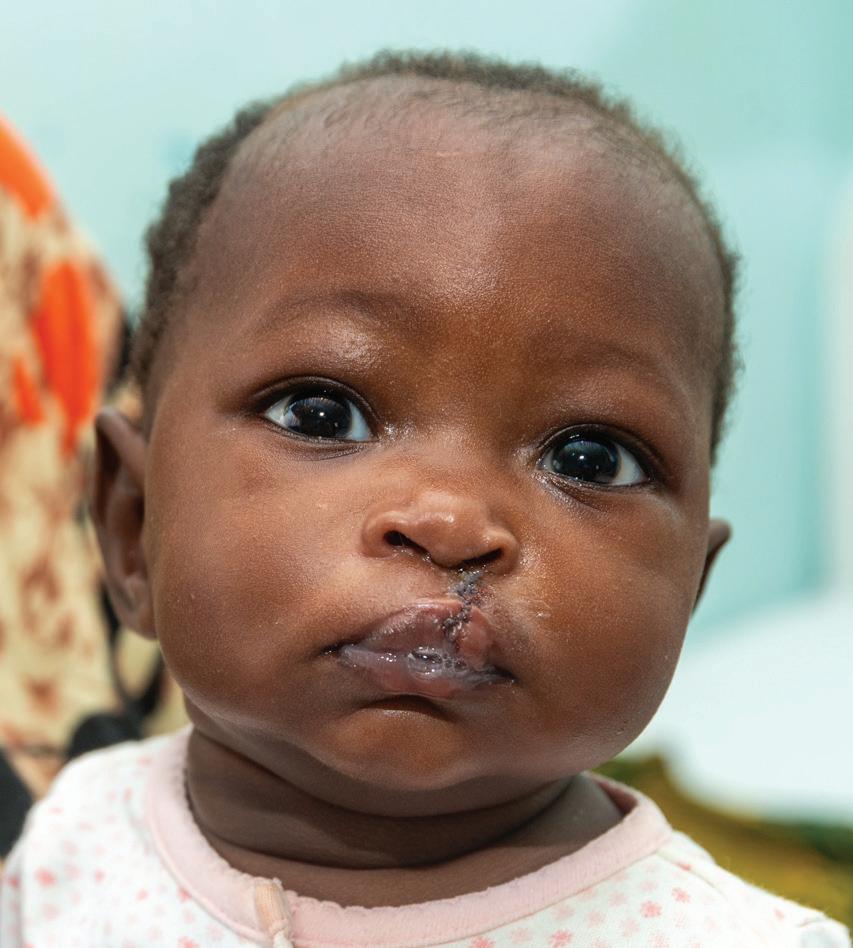
Thanks to Smile Train’s support, Devota was able to stay by her daughter’s side the whole time. It was a double relief - she could bear the thought of leaving her baby behind no more than she could bear the thought of bringing Maleciana home before her surgery to face more shame from the community.
Now, Maleciana can eat and smile like every other child, and Devota encourages every cleft mom she meets to stay strong, never be ashamed, and take her child to Bugando for treatment.

“Thanks to Smile Train’s support ... Maleciana can eat and smile like every other child, and Devota encourages every cleft mom she meets to stay strong, never be ashamed, and take her child to Bugando for treatment.”
What motivated this research study around nutrition and clefts?
What prompted this research was the need to better appreciate the extent to which nutritional challenges are addressed as part of providing cleft care in limited-resource settings. To my knowledge, there was no global data on the nutrition situation of patients with clefts. Thus, we saw this research as incredibly important for a global community – governments, policy makers, NGOs, and practitioners – that has vowed to leave no child behind.
This research has served many purposes but, by and large, the findings have encouraged Smile Train to intensify their efforts towards ensuring that every child with a cleft receives timely and proper feeding and nutrition care.

What was this research study about?
We investigated how appropriate the weight of children was for their age at the time of primary cleft surgery. Measurements of the body’s proportion helps us understand how a child is growing and is a good proxy for their nutritional status.
For this research, we made use of 600,000+ records in Smile Train’s unique clinical database from treatment centers in 85+ countries over a 10-year period.
What are the key findings of this research?
We found that about 30% of children with clefts who undergo surgery are categorized as underweight. This is appalling, yet not unexpected. Patients supported by Smile Train are born in settings where the burden of malnutrition and infectious diseases is high. Poverty, improper hygiene and sanitation, and inappropriate feeding cause children to not grow well in height and gain weight as they should, threatening their lives and damaging their futures. Both stunting (low height-for-age and impaired growth) and wasting (low weight-for-height) contribute to children being underweight.
What our paper also shows is that, when we compare children living in similar settings, those born with a cleft are systematically hit by malnutrition to a much greater extent than their peers without a cleft. This suggests that the additional risk of malnutrition linked to having a cleft is not mitigated by nutrition services and programs reaching out to these children and addressing their needs from the time of birth.
Besides increasing the risk of premature death, chronic malnutrition causes irreversible damage that no rehabilitation program can undo. Thus, no effort should be spared to identify children with clefts from birth and work with their parents to ensure that they survive, thrive, and receive surgery in a timely manner.
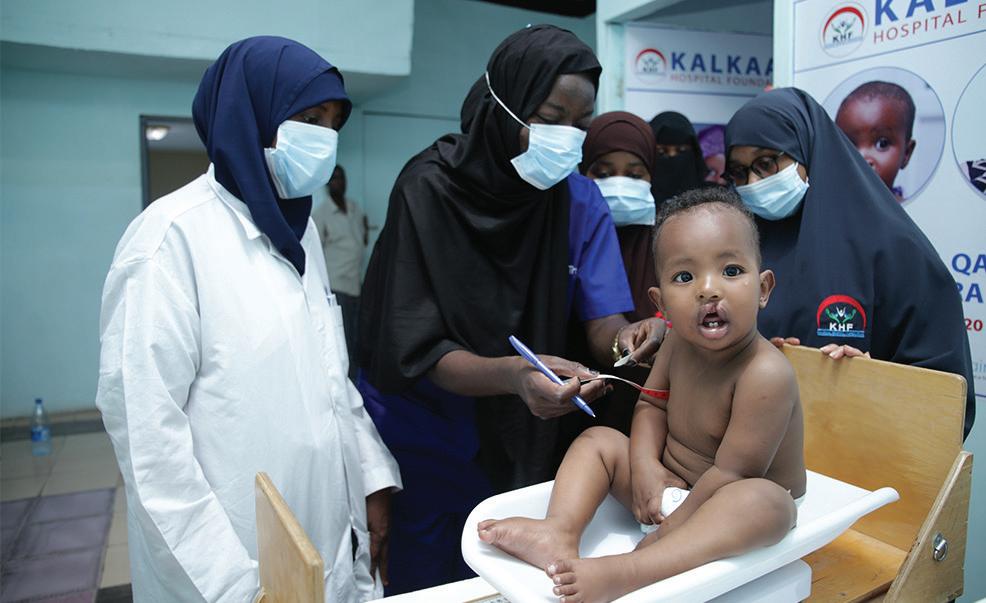
There is a widespread belief among those who set and run global and local nutrition and health agendas that malnutrition is inevitable for children with clefts. But this is wrong, and Smile Train has an essential role to play in changing this misleading perception that enables the further marginalization and poor fate of children with clefts. Virtually every baby born with a cleft lip can breastfeed successfully, and yet initiatives promoting breastfeeding to mothers and communities fail to include this and thus protect babies with clefts. A child with a cleft is first and foremost a child. Failing to address their basic human needs reinforces health inequalities.
Tell us about your role as co-chair of the Taskforce on Neonatal Safety in Cleft Care for the 2022 International Cleft Congress?
Newborns with clefts throughout Africa are threatened by a lack of access to timely maternal psychosocial and feeding assistance. For babies born with an isolated cleft of the palate, a lack of palate examination at birth undermines early diagnosis and further delays feeding assistance and timely management, largely contributing to their unfortunate fates. That’s why, together with cleft practitioners, Smile Train staff, and academics in Kenya, we devised a pilot project with an overreaching goal of improving this situation.
The Taskforce project centered around training maternal and newborn service providers in all health facilities across Bungoma County, Kenya, to examine every newborn’s palate, then promptly refer those with clefts to a local care provider and Smile Train partner. The project also includes a series of interviews, questionnaires, and surveys for health managers, healthcare providers, and service users intended to assess different aspects of the project and measure its impact. While data collection is ongoing, we have promising preliminary findings to present at the Congress and encourage scaling up and replicating this initiative in other settings.
Adriana is bringing nutrition education to cleft-affected families across Peru.
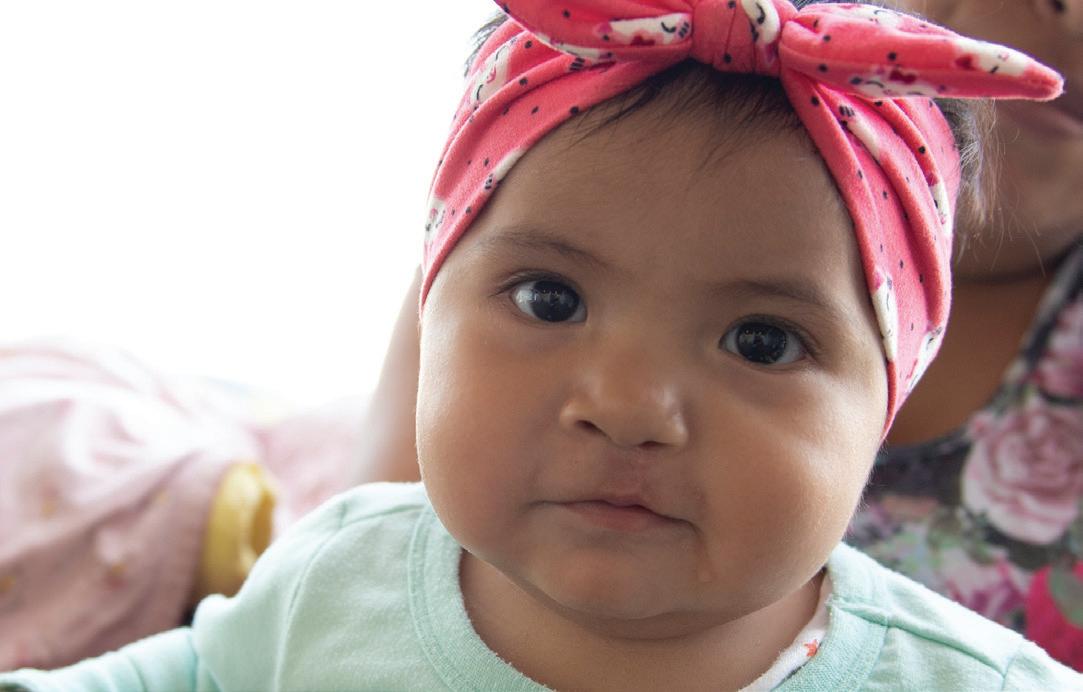

Ten years ago, Adriana Zavalaga was working as a nutrition counselor in a renowned private practice in Peru - primarily working with clients who were overweight or had insulin resistance. A fellow nutritionist friend told her that Smile Train partner Mision Caritas Felices (MCF) needed volunteers to work with people with clefts and their families. “I’ve always loved using science to help others,” she said. So, she contacted MCF and signed up to donate her time and expertise as a nutrition counselor.
At first, she evaluated the patients to check whether they could undergo cleft surgery the
next day given their nutritional status. It was clear from the start that there was a major gap that needed to be addressed: “We noticed a pattern of malnutrition and anemia in many of these patients that would temporarily disqualify them from cleft surgery.” To get these children the nutritional status they needed to move forward with surgery, something needed to be done. So, she started a cleft surgery preparation program for the children’s families.
After applying for and receiving a nutrition grant from Smile Train, Adriana now regularly hosts nutrition workshops, free of charge, for cleftaffected families. “We’ve been able to educate them on nutritious, soft foods that their children are able to eat without choking and breastfeeding techniques for clefts, as well as provide healthy foods to some of the poorest families.”
Many of the parents at these sessions have faced challenges around nutrition since their child’s birth, and some cases of malnutrition have been life-threatening. But after working with Adriana, the frustrations and fear visibly melt from their faces – there is a relief that, with these new techniques, their children will be healthy.
Adriana has learned a lot as well. “Two of the biggest challenges in Peru are the lack of information about how to feed babies with a cleft and the scarcity of doctors who are able to teach the parents. We also regularly have anemic patients – the parents don’t know that they need to give iron supplements to their children. And the lack of clean water is also a great problem because it leads to diarrhea and parasites, which weaken the patients.”

More recently, Adriana moved many of her lessons online, which has greatly increased her reach. Families living in remote areas of Peru, are now more aware of her work and can contact her online with questions. “Some of these families are from the poorest areas of Peru where there is a limited clean water supply, the highest levels
of malnutrition, and the least access to adequate medical care,” she said.
The reward for all of Adriana’s hard work is seeing her clients’ transformations. “I get the greatest satisfaction when I see patients grow up to be healthy individuals. It not only makes me very happy, but also makes me want to become better at helping them. I will still be doing this work for a long time.”
“Two of the biggest challenges in Peru are the lack of information about how to feed babies with a cleft and the scarcity of doctors who are able to teach the parents...”
What does it mean that the prevalence of underweight children with untreated clefts is not only unacceptably high, but twice that of their peers without clefts? The data in this report underscores that, regardless of the current economic, social, cultural, and political context of a country, the distinct needs of children with clefts are neither identified, recognized, nor addressed. They are being left behind.
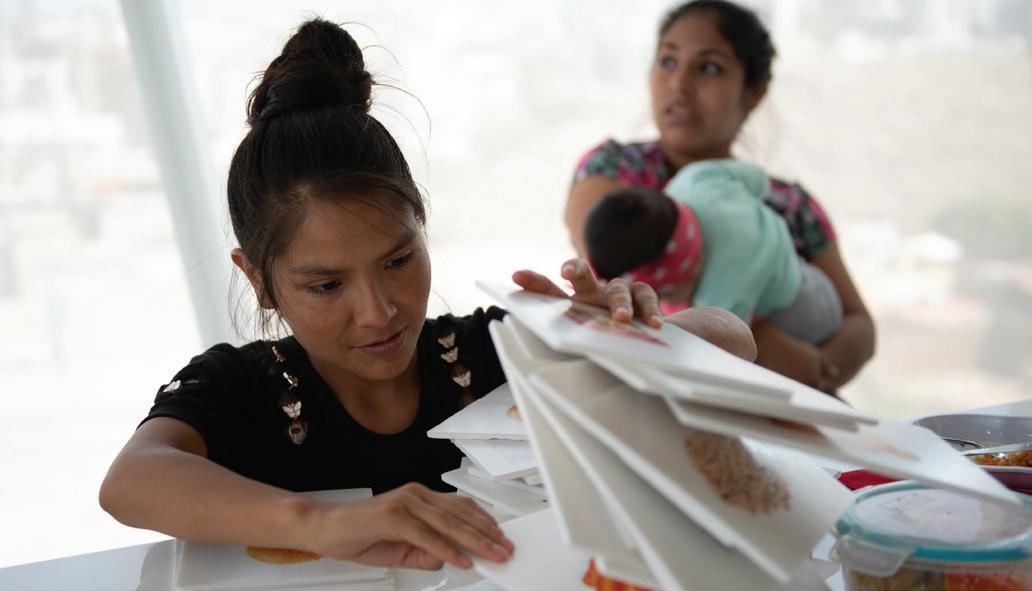
All efforts made by governments to address constraints in health and nutrition services may have little impact on these most vulnerable children unless identifiable steps are undertaken to consider their specialized needs and include them in mainstream services. These steps fall primarily under the purview of governments, because only they can create systems-level change to protect all children and fulfill their right to adequate food and nutrition. Governments can and should also engage civil society organizations, development partners, and the private sector to build fairer, more inclusive health and social systems, including by:
1. Developing or revising neonatal care-related guidelines to ensure newborn examination is universal and always includes palate examination. Governments should further ensure that maternal and newborn care providers are trained and guidelines are implemented, that there is a protocol in place for reporting cases to a centralized system, and that referral paths to cleft care teams/ treatment centers exist and are known by healthcare providers.
2. Establishing and investing in maintaining a national/regional population-based registry for reporting and counting birth differences, including clefts. A registry is essential for tracking birth differences, so that collected data can be analyzed for research and prevention purposes, for educating healthcare providers and the general public, or developing appropriate health services and allocating resources for case management.
3. Developing or revising national feeding and nutrition guidelines to consider the needs of all infants and young children and highlight specific and necessary adaptations that the health system and care providers need to implement to cover the needs of the most vulnerable, including children with clefts. This includes developing guidelines for the nutritional rehabilitation of malnourished children who experience difficulties feeding.
4. Ensuring that current and future malnutrition screening and food assistance programs are designed to include all children in need, with a particular focus on reaching the most vulnerable households.
5. Devising interventions to educate communities with factual information about clefts, such as using multiple communication channels and reaching out to trusted community leaders, to combat the stigmatization and social exclusion of children with clefts and their families, particularly their mothers.
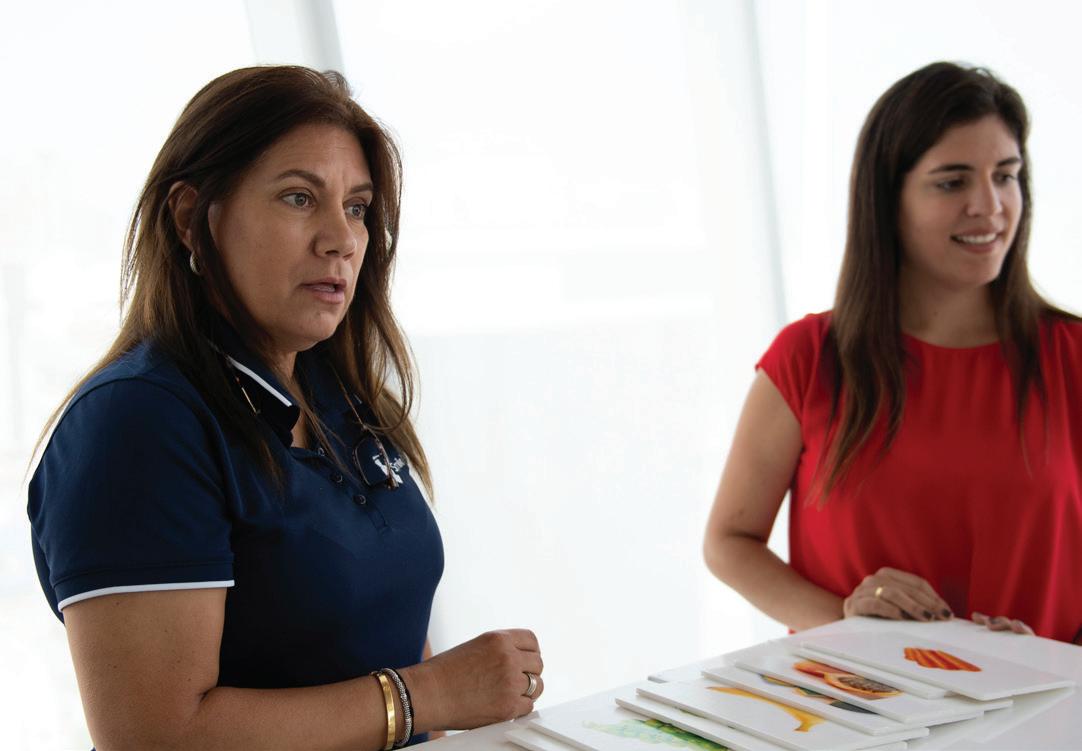
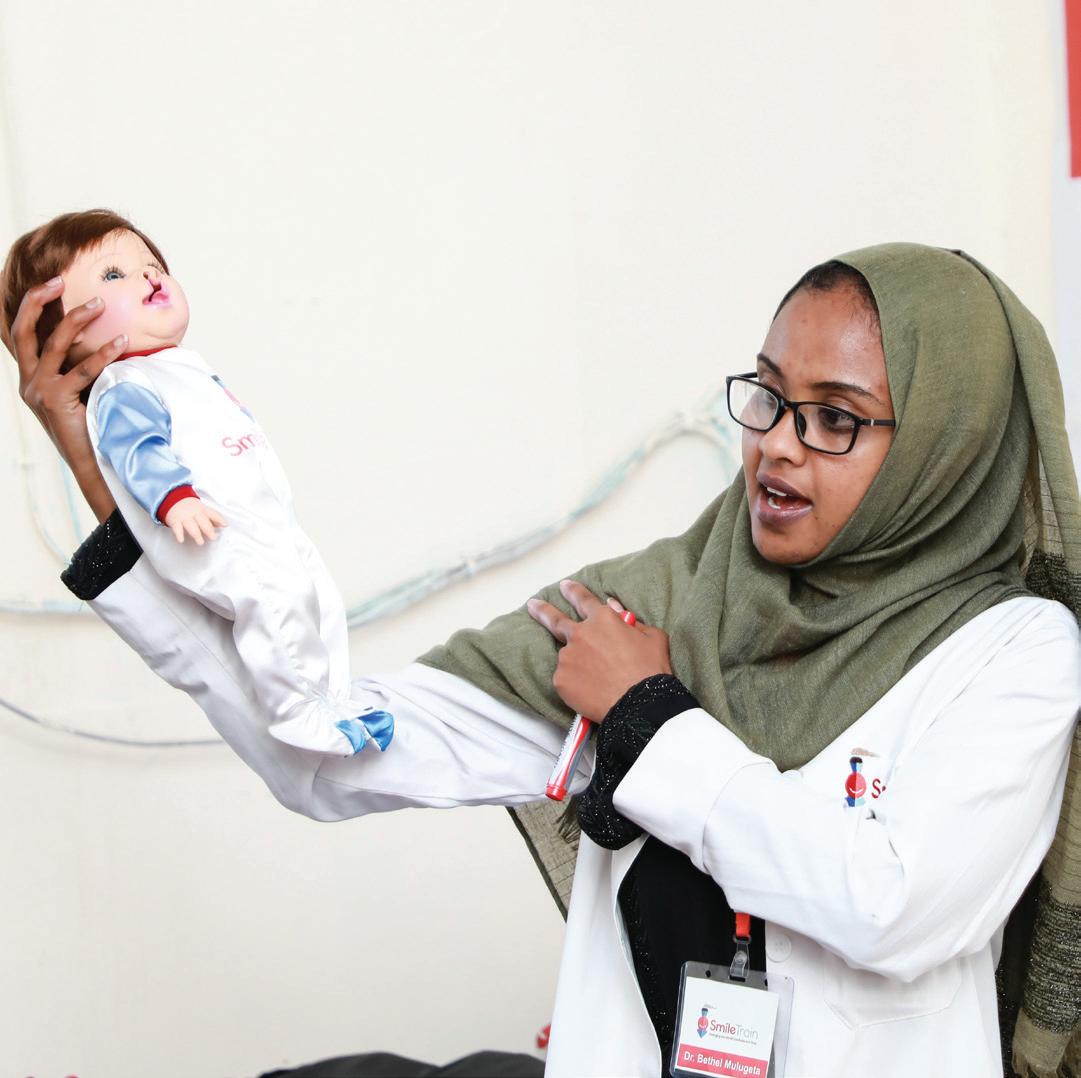
6. Using, amending, or developing social protection programs to support mothers of children with clefts, who are more likely to be socially excluded and need social transfers, cash, vouchers, and food to support their livelihood and their child’s. Governments should also offer these mothers counseling, knowledge, and guidance so they can access the appropriate health services and assistance they need to feed and care for their child.
Advocacy from civil society organizations and the international cleft and nutrition communities will be key to widespread governmental adoption of these policies and practices. Partnerships between civil society organizations, private sector stakeholders, and governments will be essential to their implementation and ongoing success. As Smile Train and our local partners work to expand nutrition programs, we are also working to build multistakeholder collaborations in the countries where we work, to support the integration of cleft-specific nutrition support into mainstream programs, policies, and best practices.
We extracted, processed, and standardized cleft patient data from Smile Train Express, Smile Train’s secure, global, proprietary patient record database. These data included weight and age observations for the past 20 years, and height since January 2021. We modified the data as necessary to align with IHME’s GBD modeling demographic groups, which included assigning ages to GBD age ranges, designating sex as male or female, matching location information to GBD regions, and binning according to year. We calculated z-scores using the 2006 World Health Organization (WHO) Growth Standards and
applied the same +6 and -6 z-score restriction for inclusion as was used in GBD estimation. We paired calculated underweight rates with corresponding GBD underweight rates from matching year, location, age group, and sex to calculate the prevalence rate ratio (PRR). This was followed by a Bayesian meta-regression model of PRR to predict PRR for each country. We then incorporated the adjusted data into a meta-regression model to generate global estimates of the rate of underweight in cleft patients younger than 5 years, stratified by age, sex, location, and year. Figure 1 illustrates our approach to estimation.
Figure 1: Estimation flowchart for quantifying the burden of malnutrition in children (younger than 5 years) with clefts.

We matched these underweight rates in children (younger than 5 years) with clefts with the existing corresponding general population estimates of underweight prevalence rates and the health consequences of underweight from the GBD. Then we estimated the following:
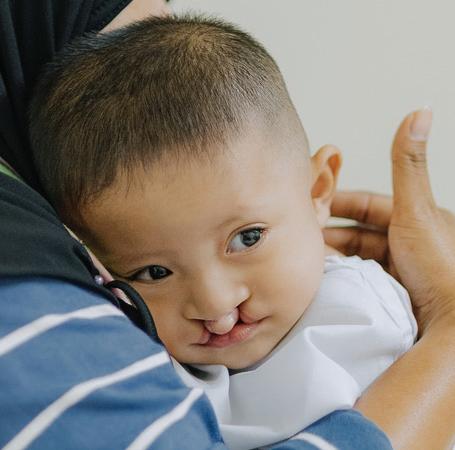
• Comparative malnutrition burden in those with clefts: We compared the total number of children with malnutrition and the number with both a cleft and malnutrition to generate the proportion of total malnutrition that is associated with clefts. We used this proportion, as well as the PRR above, to calculate the number of “excess” cases of malnutrition in those with clefts.
• Health consequences of malnutrition in those with clefts: We evaluated the health consequences of malnutrition in individuals with clefts by leveraging GBD-analyzed relationships between malnutrition and subsequent malnutrition-related illness and death. We applied this to the total and “excess” number of malnutrition cases in children (younger than 5 years) with clefts, allowing us to estimate the health consequences of malnutrition specifically in the cleft-affected population.
The outputs of this work are estimates of the burden of underweight condition of children younger than 5 years with clefts. These estimates encompass relative rates of underweight in those with clefts, total underweight children with a cleft, excess malnutrition cases in those with clefts, and the associated malnutrition-related consequences, including deaths.
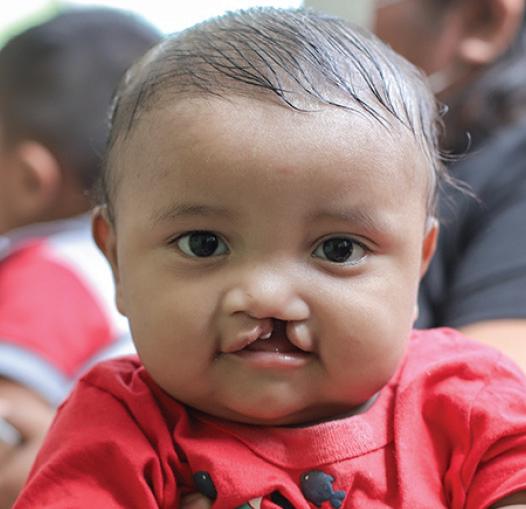
The Global Burden of Disease, Injuries, and Risk Factors (GBD) study is the largest systematic report that quantifies the comparative magnitude of health loss due to diseases, injuries, and risk factors by age, sex, and geographies for specific points in time. With a vision for all lives to be lived in full health, IHME uses the GBD to assess how 369 diseases and injuries and 87 risk factors contribute to health loss in 204 countries and selected subnational locations - producing regular estimates of all-cause mortality, deaths by cause, years of life lost due to premature mortality (YLLs), years lived with disability (YLDs), and disability-adjusted life years (DALYs).
The GBD study includes estimates of cleft incidence, prevalence, and mortality. These are constructed within the “causal” framework of GBD, where each death or morbidity has a single underlying cause, and all diseases are analyzed in a mutually exclusive and collectively exhaustive fashion to provide a comprehensive assessment of levels and trends of health loss across populations. Estimates of incidence and prevalence of clefts are derived from a combination of birth registry data, administrative data (hospital discharges and insurance claims), and published studies. These data were processed using standardized algorithms to maximize comparability, then meta-regressed in a compartment model to ensure internal consistency.
GBD produces estimates of CGF. The 3 subcomponents of CGF that we model include stunting (defined by a height-for-age z-score), wasting (defined by a weight-for-height z-score), and underweight (defined by a weight-for-age z-score), each of which is analyzed separately and in an internally consistent manner. The modeling process, in brief, consisted of collecting, extracting, and standardizing data from both household surveys (which contain individuallevel height and weight measurements) and from published reports and studies (which report on aggregate rates of CGF in different populations). After standardization, we ran a model on all individual-level data to determine the shapes of the distributions and then triangulated using all data to generate the full distributions of HAZ, WAZ, and WHZ-scores globally by location, year, age, and sex. The resulting prevalence estimates of CGF were paired with metaanalyzed evidence on the elevated relative risk of malnutrition-related diseases to estimate the attributable burden of malnutrition. The outcomes with sufficient evidence to be included in the attributable burden calculations included proteinenergy malnutrition, lower respiratory infections, diarrhea, and measles.

1. Friedman O, Wang TD, Milczuk HA. Cleft Lip and Palate. In: Cummings OtolaryngologyHead and Neck Surgery. Elsevier; 2010:26592675. doi:10.1016/B978-0-323-05283-2.001877
2. Mossey PA, Little J, Munger RG, Dixon MJ, Shaw WC. Cleft Lip and Palate. The Lancet. 2009;374(9703):1773-1785. doi:10.1016/S01406736(09)60695-4
3. Carlisle D. Feeding Babies with Cleft Lip and Palate. Nurs Times. 1998;94(4):59-60.
4. Baylis AL, Pearson GD, Hall C, et al. A Quality Improvement Initiative to Improve Feeding and Growth of Infants with Cleft Lip and/or Palate. Cleft Palate Craniofac J. 2018;55(9):1218-1224. doi:10.1177/1055665618766058
5. Wilson J, Hodges A. Cleft Lip and Palate Surgery Carried Out by One Team in Uganda: Where Have All the Palates Gone? Cleft Palate Craniofac J. 2012;49(3):299-304. doi:10.1597/09-039
6. Feeding & Nutrition. Smile Train. Published 2021. Accessed April 13, 2022. https://www. smiletrain.org/patients-families/feedingnutrition